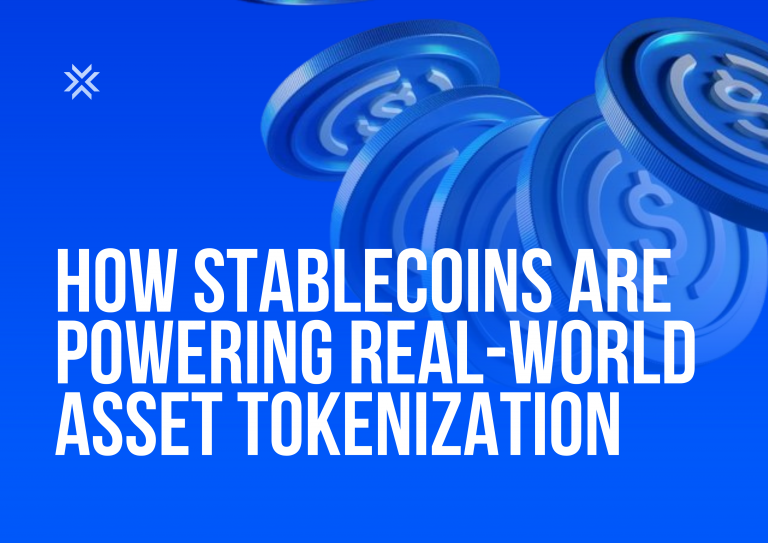For years, the biggest barrier to crypto adoption wasn’t price volatility, regulation, or even scams — it was user experience.
Wallets were confusing. Seed phrases were scary. Gas fees were unpredictable. And a simple action like sending tokens required a level of technical comfort most new users simply did not have.
But 2024–2025 marked a turning point. A new wave of innovation called wallet abstraction is transforming how people interact with Web3, making onboarding smoother, transactions easier, and the entire experience feel more like modern Web2 apps.
This blog breaks down how wallet abstraction works, what account abstraction enables, and why it is one of the most important upgrades for mainstream crypto adoption.
What Is Wallet Abstraction?
Wallet abstraction is the idea that users should not have to manage the complexity of traditional crypto wallets.
Instead of relying on private keys, seed phrases, and gas fees, wallets become smart, flexible, and user-friendly — operating more like apps than cryptographic vaults.
At the center of this shift is account abstraction (AA), a new Ethereum standard (EIP-4337) that turns wallets into smart contracts with customizable rules.
This completely changes how users interact with their wallets.
Account Abstraction: The Foundation of the UX Revolution
Before AA, Ethereum had two types of accounts:
- Externally Owned Accounts (EOAs) → controlled by private keys
- Smart Contract Accounts → programmable but not usable as wallets
Account abstraction merges these worlds.
With AA, wallets become smart contract wallets, unlocking features like:
- social recovery
- programmable security
- multi-signature options
- spending limits
- session keys
- automatic payments
- biometric login
- and more
In short: a wallet becomes as flexible as any modern app.
In-App Wallet Creation: Onboarding Without the Friction
Traditionally, creating a wallet required:
- writing down a seed phrase
- understanding private keys
- installing a wallet extension
For new users, this was a deal-breaker.
With wallet abstraction:
1. Users can create wallets instantly inside an app
No extension. No separate wallet download. No seed phrase.
2. Login becomes Web2-like
Users can sign up using:
- email
- phone number
- Face ID
- Google login
- biometrics
The technical complexity is hidden behind intuitive UX — just like logging into Netflix or Instagram.
3. Apps can sponsor or manage keys behind the scenes
Users still own their wallet, but the complexity is invisible.
This simple change has already boosted onboarding for DeFi apps, games, NFT platforms, and Web3 mobile apps.
Gasless Transactions: Making Crypto Feel Like a Normal App
One of the most confusing parts of Web3 is gas fees — and the fact that users must always hold blockchain-native tokens (ETH, MATIC, etc.) to do anything.
Wallet abstraction introduces paymasters, a concept that enables:
1. Gasless transactions
Apps can pay gas fees for the user, making interactions smooth and cost-free.
2. Gas payment in any token
Users can pay gas in:
- USDC
- DAI
- platform tokens
- even points or credits
3. Hybrid models
Some apps let users perform their first few actions completely free, improving first-time experience.
This alone removes one of the biggest onboarding barriers in crypto.
Web2-Like Onboarding: The Turning Point for Mass Adoption
Imagine opening a crypto app and:
- signing up with an email
- receiving an instant in-app wallet
- running your first transaction without paying gas
- recovering the wallet if you lose access
- setting spending limits for security
- using Face ID to sign transactions
This is now not only possible — it’s becoming the standard.
Wallet abstraction is driving this shift by enabling:
1. Seed phrase–free onboarding
Lose your phone? Recover wallet like any Web2 account.
2. Social recovery
Trusted contacts or devices rebuild your access without needing a cryptic 12-word phrase.
3. Session keys for apps and games
Let users perform multiple actions without signing every single transaction.
4. Invisible wallet interactions
Users don’t need to know they’re using cryptography — it just works.
For the first time, Web3 apps can compete with Web2 apps in usability.
Real Use Cases Pushing Adoption Forward
Crypto Games
Players can:
- get an auto-created wallet
- make moves without constant pop-ups
- transact without paying gas
This makes blockchain gaming actually feel like gaming.
DeFi Apps
New users can make swaps or deposit into vaults without:
- holding ETH
- paying gas
- learning MetaMask
Complete Web2 onboarding, Web3 power.
NFT Marketplaces
Minting, buying, or selling NFTs becomes instant and gas-free, helping artists and collectors join easily.
Mobile Wallets
AA gives mobile apps a superior experience, especially with biometric authentication.
Why Wallet Abstraction Matters for the Next Billion Users
The crypto industry has long said “mass adoption is coming.”
But adoption can only happen when user flow becomes:
- simple
- intuitive
- safe
- mobile-friendly
- frictionless
Wallet abstraction delivers exactly that.
By hiding the complexity of blockchain while preserving user ownership, wallet abstraction makes crypto feel like the apps users already understand.
It’s the missing puzzle piece that bridges the gap between Web2 simplicity and Web3 innovation.
Conclusion: Web3 Is Finally Becoming Usable
Wallet abstraction is more than a technical milestone — it’s a UX revolution.
It removes the biggest pain points of Web3:
- seed phrases
- confusing gas fees
- complex onboarding
- constant transaction pop-ups
And replaces them with:
- smooth login
- in-app wallets
- gasless transactions
- recoverable accounts
- user-friendly security
As more ecosystems adopt account abstraction, Web3 will feel less like an experiment and more like the next generation of the internet.
The future of crypto is not only decentralized —
it’s finally easy to use.









